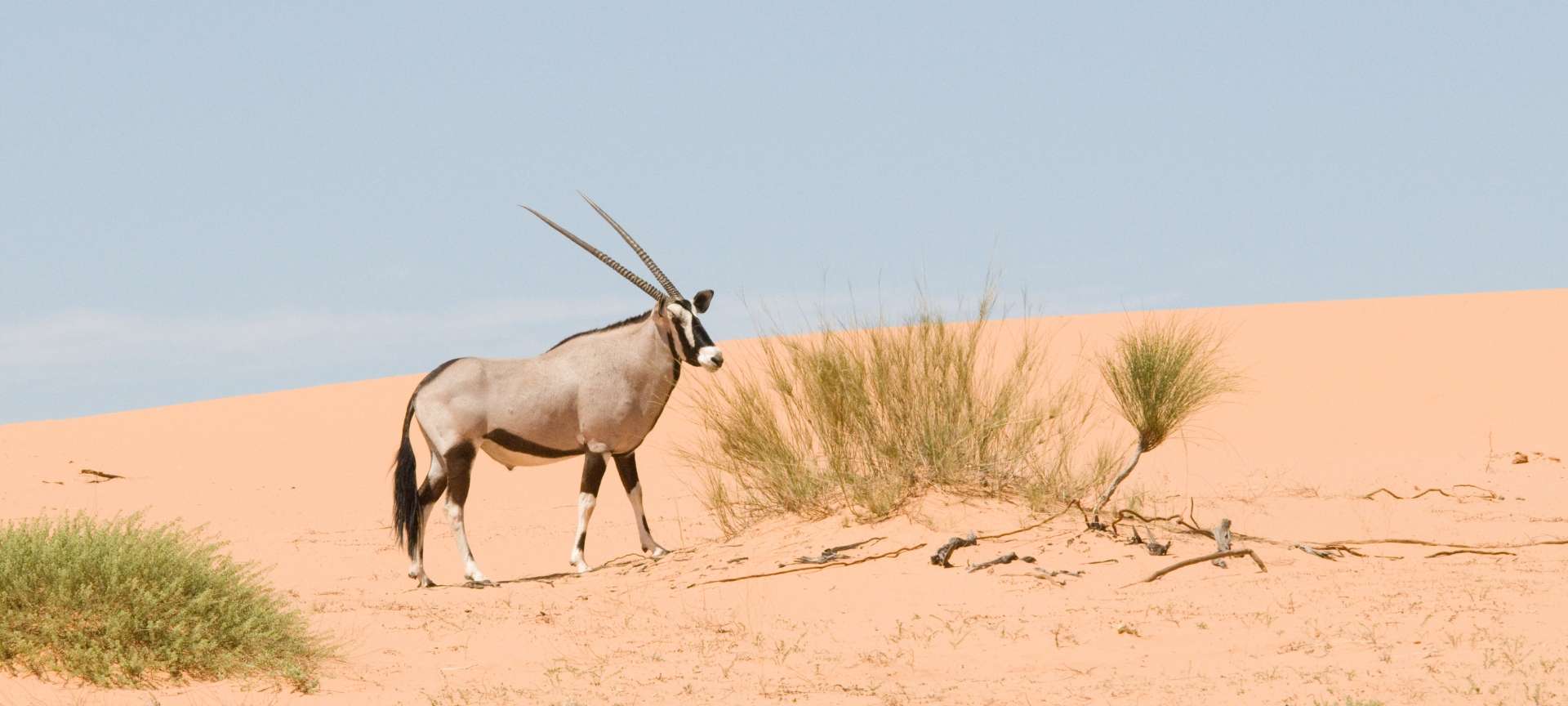The desert landscapes of Botswana are beautiful environments to explore with their own unique wildlife species. This is the perfect experience for safari-goers looking for a more secluded African adventure.
Why Should You Go on a Desert Safari in Botswana?

Arid Beauty
The stark beauty of Botswana’s desert landscapes is so different from the popular destinations such as the Okavango and Chobe. During a desert safari, you’ll see unique flora and fauna and get to do activities not found elsewhere.
Unique Wildlife
Botswana’s deserts are home to a unique array of wildlife, such as black-maned lions, meerkats, oryx, springbok, and gemsbok. For birders, you’ll have the chance to spot species of raptors and bustards.
Spectacular Stargazing
The desert offers travellers one of the best stargazing experiences in the world, thanks to its isolation, clear conditions, and lack of light pollution. Dramatic sunsets are also amazing sights to see.
Cultural Experiences
The Kalahari is home to one of the oldest surviving cultures in the world: the San. They are the indigenous people of Botswana, and a trip here can include cultural interactions to learn more about their traditional way of life.
Remote Safari Experience
The desert areas of Botswana are some of the least visited safari destinations in the country, making a desert safari ideal for those seeking a remote and tranquil experience away from crowds.
Best Destinations for Desert Safaris in Botswana

Central Kalahari Game Reserve
Located in the middle of the Kalahari Desert and the largest game reserve in Botswana, the Central Kalahari Game Reserve features stunning desert scenery and black-maned lions. Desert-adapted antelope, such as springbok and oryx, can also be found, along with cheetahs.
Makgadikgadi Pans
The Makgadikgadi Pans are some of the largest salt pans in the world and feature surreal landscapes that are perfect for quad biking. This is also the ideal place to go on a meerkat safari to spend time with these sociable, playful creatures.
Nxai Pan National Park
Nxai Pan is well-known for its vast, open plains and iconic cluster of ancient baobab trees many have found shelter under over the 100,000 years plus they’ve been here. Zebras, wildebeest, springbok, and gemsbok attract many predators, and there are also large numbers of bat-eared foxes.
5 Tips for a Desert Safari in Botswana

1. Visit in the Dry Season
Plan your Botswana safari for the dry season (May to October) to experience the desert landscapes in all their glory and for optimal wildlife viewing.
2. Dress in Layers
Bring lightweight clothing in safari colours, as well as some warm layers. Temperatures can rise and drop quickly in the desert.
3. Knowledgeable Guides
Opt for knowledgeable guides who know the desert areas well, as these regions are extremely remote. When you book with Discover Africa, we’ll ensure that your desert safari is conducted by experts.
4. Keep a Water Bottle With You
Stay hydrated by carrying sufficient water with you to combat the desert heat.
5. Bring a Camera
The desert environments of Botswana provide amazing photography opportunities. We recommend using a wide-angle lens to capture the expansive landscapes.